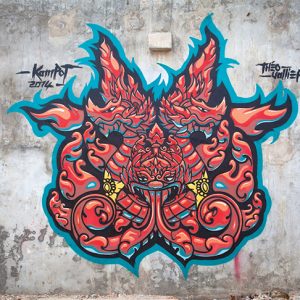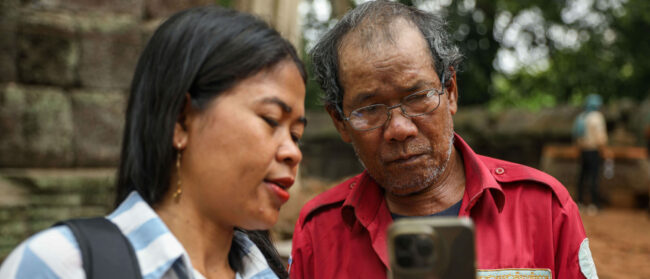In early December, something unusual occurred in downtown Phnom Penh. In a city not renowned for its enlightened approach to public art, one of the world’s foremost street artists was wielding ice-cooled spray cans. Not only that, he was painting a mural of a hitherto unknown seamstress named Moeun Thary.
From a perch high up on a cherry picker, Miles ‘El Mac’ MacGregor created a spearmint green, grey and white image depicting this middle-aged woman holding aloft a needle and thread, her eyes looking proudly into the distance. It was completed by December 16, but just a few days later it was gone, hastily whitewashed over on the order of city authorities.
“I hope this mural can serve as a respectful tribute to the importance and perseverance of Cambodia’s creative legacy, and possibly, in some small way, offer inspiration for younger Cambodian artists to sustain this legacy,” El Mac wrote on his blog after completing the image.
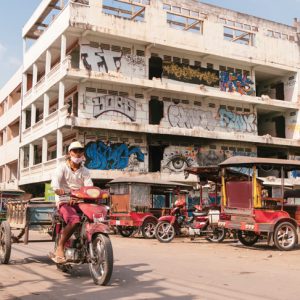
Since its erasure, the image has become infamous, spawning a legacy that may reach much further than the artist’s original intention. In the aftermath, it has been widely shared on social media, becoming something of a focal point in the interface between the authorities and ordinary people.
The mural itself was bankrolled by David Choe, an American multimedia artist who famously accepted stocks in return for painting murals at Facebook’s offices. Those stocks are now worth an estimated $200m and allow him to fund his Igloo Hong project, which takes artists around the world with the freedom to create their best work. Renowned street artists Aryz, Esao Andrews and James Jean joined El Mac in attempting to beautify Cambodia’s capital, along with Choe himself.
The reasons behind the municipality’s decision to paint over the mural remain obscure, although its spokesman Long Dimanche told the Phnom Penh Post that it was because permission had not been granted, though he said an application had been received. A fixer working with the artists told the paper that they paid $2,000 in fees and believed they had a verbal go-ahead, if not the paperwork.
“City Hall strongly discourages any street art which is unauthorised and depicts something inappropriate,” Long Dimanche, who would not answer specific questions about the mural, told Southeast Asia Globe.
Having organised last year’s Cambodia Urban Art Festival, as well as other events that display artwork in public spaces, Kor Borin has experience working with city authorities. The head of cultural services at the Institut Français said that the process of obtaining a permit involves submitting detailed plans to the municipality and consultation between all stakeholders. Potential designs must chime with Cambodian cultural sensibilities, Kor Borin explains, so therefore “no nudity or images of death”.
Just a stone’s throw from the site of the mural, a small market hums with everyday life. Stallholders announce their wares, a female vendor hacks the head off a live fish and parked motorbikes sprawl into the street. In the adjacent alleyways, the aforementioned artists got to work, and the results draw mixed reactions from locals.
“I don’t understand what it means,” says 30-year-old Noeun Monika. She is referring to the colourful, cartoon-like heads that Choe himself painted on the outside wall of her money transfer shop. Opposite these are even more abstract designs.
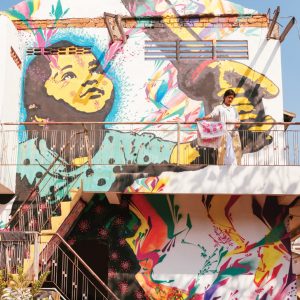
Just down the street there is a more figurative mural of a boatwoman by James Jean. This meets with Noeun’s approval. Tuk tuk driver Haem Bophann, who is parked in front of the artwork, also likes it and wants to see more such pieces – if they are “attractive and colourful”.
Down a nearby alley that leads to an upmarket apartment block, one wall is now taken up with the elongated figure of a cartoon man and the figure of a bull. Neither of these are popular with an elderly man sitting in a deckchair opposite. “I don’t like any of them,” he says, shaking his head and refusing to be drawn further.
Koy Leangeang, who runs a nearby grocery shop, says she likes the painting on the wall of her business, a silvery image of a sailing ship by Esao Andrews. “They came to ask permission first and showed me the design, so I said yes,” she explains.
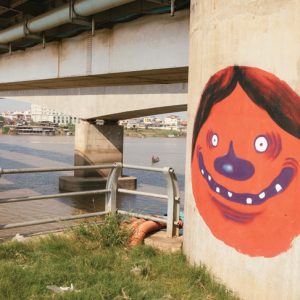
But across the Tonle Sap river, under a concrete bridge that is home to swifts and a few cows, another tuk tuk driver, Ry Houl, is not so sure about a further set of cartoon-like faces by David Chao. “I don’t understand them,” he says. Although he adds later that he would like to see more murals in the city, as long as they “make sense”.
A 15-minute drive west, the Boeung Kak area was once a thriving magnet for backpackers. It is now a district in limbo, with much of the area earmarked for a large development. Some residents were evicted, others received settlement packages while many simply upped and left. But a few cling on, some of them holding out for a better deal from the authorities.
The shells of former guesthouses loom over the street, their windowframes and doorframes knocked out. Life goes on. An emaciated man prepares to smoke some methamphetamine, while across the road a teenaged girl hangs out washing. But all around, walls are covered in colourful art – a spiky red serpent here; a stencil of a woman crying turquoise tears there.
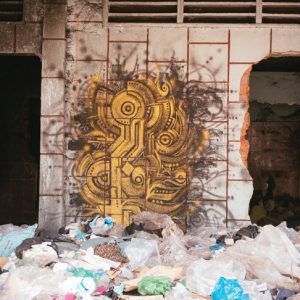
The art is partly due to the French owners of Simone Bistro, situated here, who have encouraged artists to paint the walls in an effort to revive the area. One resident, 69-year-old Say Sophorn – whose house stands alone in a patch of razed buildings as she waits for a settlement – likes the images that have sprung up in the devastation around her. “It’s good,” she says. “They bring some life and colour to the area.”
Two Cambodian artists who have painted here are Koy, 18, and Strange, 20. Strange grew up in Los Angeles and was exposed to its street art from an early age before moving to Cambodia when he was 11. He says he realises it is hard for local people to accept the edgier forms of street art and has adapted his style accordingly by stylising the Khmer script in a modern but accessible way. Koy, who first became aware of street art via social media and by seeing work in the Boeung Kak area, likes the “freedom” to express himself outside the confines of traditional Khmer arts, but given the chance to fill the vacant space where the mural was, he would paint something related to “Cambodian culture, the people of Phnom Penh”.
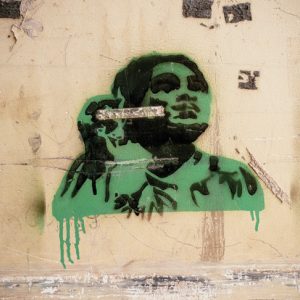
For Nico Mesterharm, the founder of German-Cambodian cultural centre Meta House, part of the problem is that “the people who make these decisions just don’t understand art”. Mesterharm adds that authorities and building owners need “to see that [art] does not damage their facades – it’s an add-on”. He also points to the potential for tourism and for attracting other creative people to Phnom Penh and putting it on the cultural map.
Added to this lack of appreciation of art, there is the government’s fear of free expression, especially in the form of street art. “They don’t understand it, they don’t know why people do it, they don’t see the point in it,” says Victor Blanco, a lecturer and illustrator living, working and painting in the city. “I think they’re worried about the idea that it might be political.”
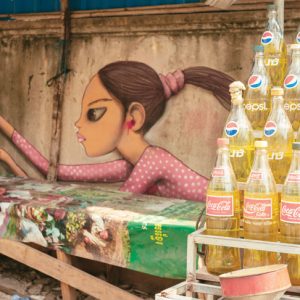
Blanco also points out that, conversely, many of the Cambodians painting walls here are from relatively wealthy and well-connected families – and some can even afford to employ assistants. People from a poor background lack such advantages, particularly the wherewithal to extricate themselves from trouble if they are caught painting without a permit.
Therefore, however inspiring the efforts of Choe and his cohorts, along with those of numerous expatriate street artists, it is unlikely a truly grassroots street art movement will occur for some time.
French artist Chifumi, a co-organiser of the Cambodia Urban Art Festival, is not discouraged. In the wake of the mural incident he is simply pleased to see Cambodians talking about street art in such numbers.
“When we started the festival, nobody really knew about street art,” he said. “You have to do things step by step, following the cultural background.”
Any visitor to Cambodia will sooner or later notice that buildings, artworks and traditional clothing feature similar decorative motifs. This style is known as k’bach and is characterised by repeated shapes and flourishes within a basic outline. This produces the rich ornamentation that can be seen from carvings on the world-famous Angkor temples to the moulded ceiling decorations and carved wooden furniture so common in modern-day Cambodia.
In the Khmer language, the word can refer to any traditional art form, including the movements of classical dancers and those practicing the ancient martial art of Kun Khmer. Some street artists working in the Kingdom have found that incorporating or adapting elements of k’bach can help their art gain the acceptance of the Cambodian public and, in particular, the authorities who grant approval for artists’ work to go up in public spaces.
